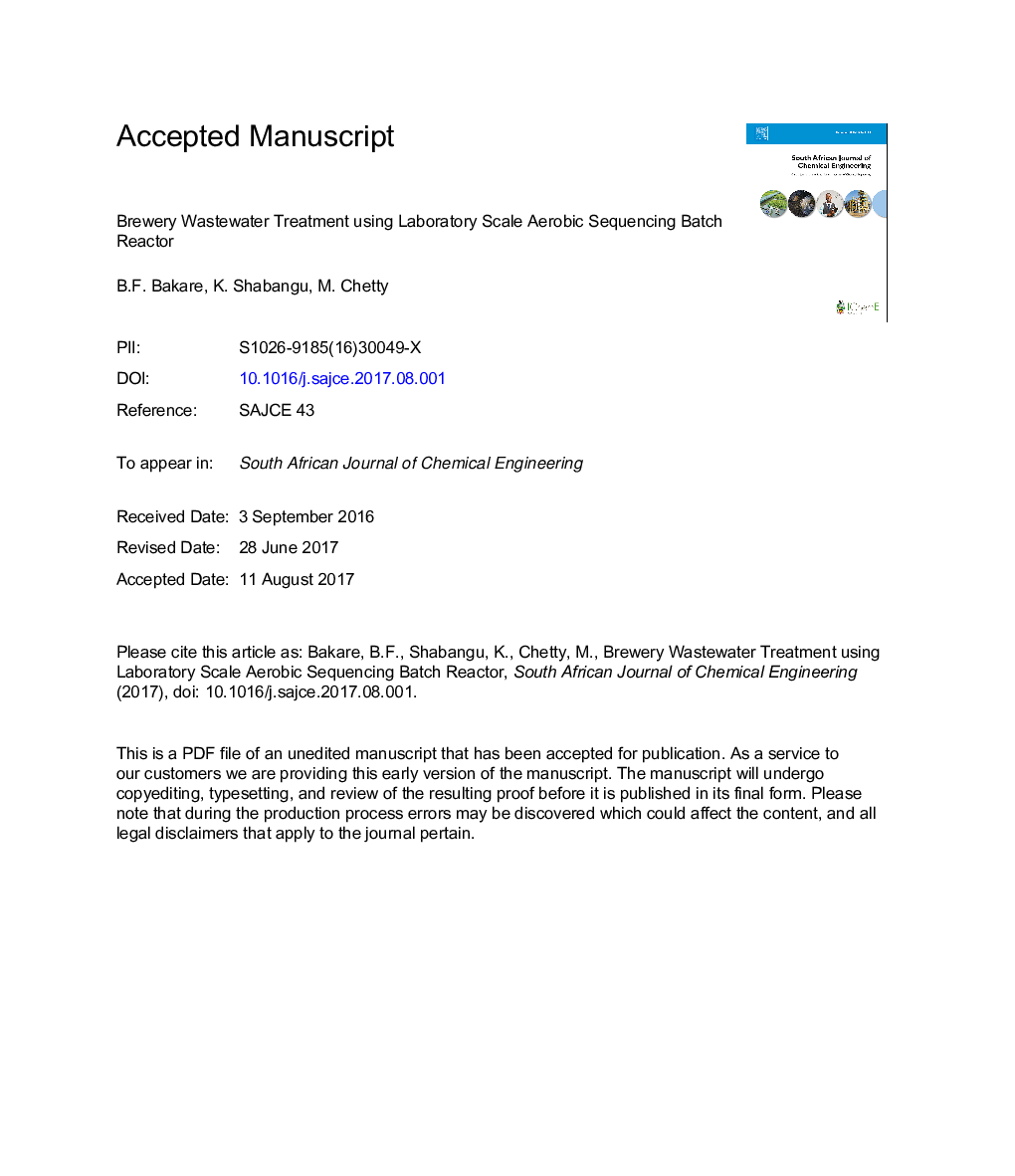| Article ID | Journal | Published Year | Pages | File Type |
|---|---|---|---|---|
| 8917089 | South African Journal of Chemical Engineering | 2017 | 14 Pages |
Abstract
This study evaluates the performance of two laboratory scale aerobic sequencing batch reactor operated under continuous low aeration and cyclic aeration scheme for the treatment of wastewater generated from a local brewery in Durban South Africa. The continuous low aeration scheme was intended to determine its effect on the performance of the reactor in terms of organic material removal compared to a typical cyclic aeration reactor for biological organic material removal. The performance of the two laboratory scale reactor was determined in terms of removals of chemical oxygen demand and biological oxygen demand. These two parameters were selected because they are priority pollutants and organic components in brewery wastewater. The experimental results demonstrated that reductions in chemical oxygen demand and biological oxygen demand in wastewater generated from the breweries can be successfully achieved using both aeration configurations. However, the treatment efficiencies in terms of the removal of chemical oxygen demand was consistently maintained above 90% and for biological oxygen demand it was observed to be above 80% with the reactor operated under the continuous low aeration scheme performing significantly better than the reactor operated under the cyclic aeration scheme.
Related Topics
Physical Sciences and Engineering
Chemical Engineering
Chemical Engineering (General)
Authors
B.F. Bakare, K. Shabangu, M. Chetty,
